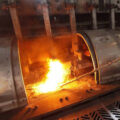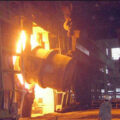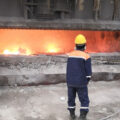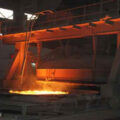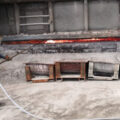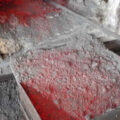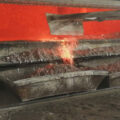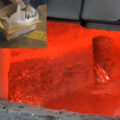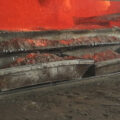Purification treatment of aluminum alloy melt can be divided into in-furnace treatment and out-of-furnace treatment according to different production links. The purification technology in the aluminum alloy melt furnace can be divided into adsorption purification treatment technology and non-adsorption purification treatment technology. The adsorption method mainly relies on the refining agent to produce the effect of adsorbing oxidation inclusions, while removing the oxidation inclusions and the hydrogen attached to the surface to achieve the purpose of purifying molten aluminum. The non-adsorption method mainly relies on other physical and chemical effects to purify the aluminum liquid.

Purification Treatment of Aluminum Alloy
The refining effect of the adsorption method only occurs on the adsorption interface, and the non-adsorption method also acts on the whole aluminum liquid. The adsorption method mainly includes inert gas purging, active gas purging, mixed gas purging, chlorine salt (hexachloroethane) purification, non-toxic refining agent purification, flux method refining, etc.; non-adsorption methods mainly include vacuum purification treatment method ( Static vacuum treatment, dynamic vacuum treatment), ultrasonic purification treatment method, electromagnetic purification treatment method (direct current, alternating current, rotating magnetic field, traveling wave magnetic field purification treatment method) pressure crystallization method, rare earth element solid hydrogen method, etc.
In the adsorption purification treatment technology, chlorine refining is used to generate aluminum trichloride with liquid aluminum and hydrogen chloride with hydrogen. It has both physical and chemical purification effects. The refining effect is obvious, but it causes serious damage to the environment and equipment. Chlorine is the most fundamental culprit that destroys the ozone layer of the atmosphere. Later, it was changed to nitrogen refining, and even 99.99% high-purity nitrogen refining was used, which not only increased the cost, but also had poor refining effects. Although people have realized the seriousness of the problem and are striving to improve the process, years of efforts are still not satisfactory. Non-toxic and pollution-free refining processes (such as refining with inert gases such as nitrogen and argon) are often not enough The refining effect that can be achieved by the chlorine refining treatment with severe environmental pollution.
In recent years, mixed gas refining has been widely adopted abroad, that is, adding a small amount of active gas to high-purity nitrogen or gas, while strengthening the hydrogen removal effect of aluminum alloy melt, it is beneficial to remove the inclusions inside the aluminum alloy melt. The surface of the alloy melt creates dry slag, which can achieve a good refining effect, and the amount of chlorine mixed can be artificially controlled, which has little impact on the environment. Commonly used composite purification gas composition: N2 (or Ar) Cl2; N2 (or Ar) Cl-CO2; N2 (or Ar) CCl4.


